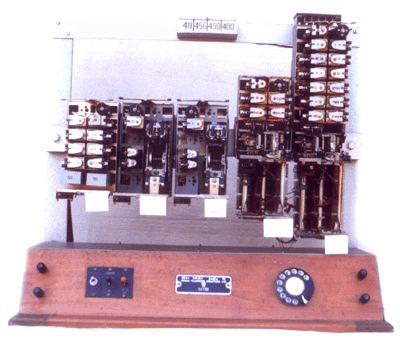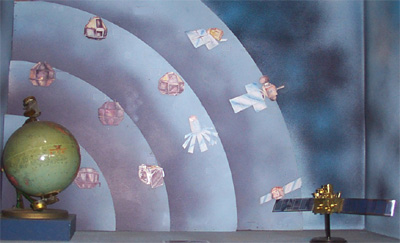 |
| The First
Radio Transmitting Set
This transmitter
was first used in India in 1924 by the Madras Presidency Radio Club with Mr. H.E. Viscount
Goschen, the then Governor of Madras as its patron. In October 1927 after the Club stopped
functioning, this transmitter was presented to the Corporation of Madras who started a regular
broadcasting service from 1st April 1930. The service, maintained by this
transmitter up to 15th June 1938. It not only benefitted the public of Madras but
also places outlying Madras such as Chittoor, Viziyanagaram etc., and Sri Lanka. This
transmitter had to be put out of commission due to the establishment of the Madras Station of
the All India Radio on 16th June 1938. The Council of the Corporation of Madras at
its meeting held on 4th July 1939 sanctioned the presentation of this transmitter
to the Government Museum to perpetuate the memory of the pioneer radio broadcasting activity
in India. |

|

|
Strowger
Telephone Exchange
Strowger Telephone
Exchange unit is displayed to illustrate the working principle of telephone communication. In
this working model, two actual telephones are connected with this Strowger Telephone
Exchange. Dailing from one telephone to another, the visitor can understand the working
principle of the Ring tone circuit, Line circuits, Group selector circuit and Final selector. |
Artificial Satellite
A number of satellites
of various shapes and sizes have been launched and are orbiting the earth at various distances
from it. These satellites collect information on cosmic rays, electron density, solar
radiation, cloud formation and infra-red radiation in space. This helps scientists to predict
weather conditions. Some satellite also help in television programs, communication network,
remote sensing, etc. This semi-diorama show-case illustrates the various Indian satellites in
orbit. |

|
|

|
|